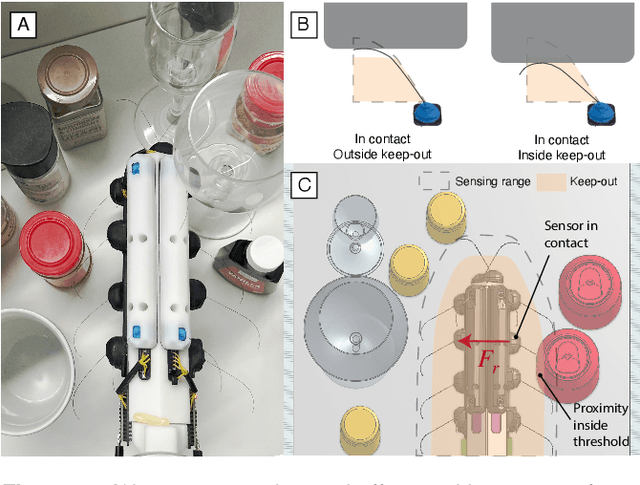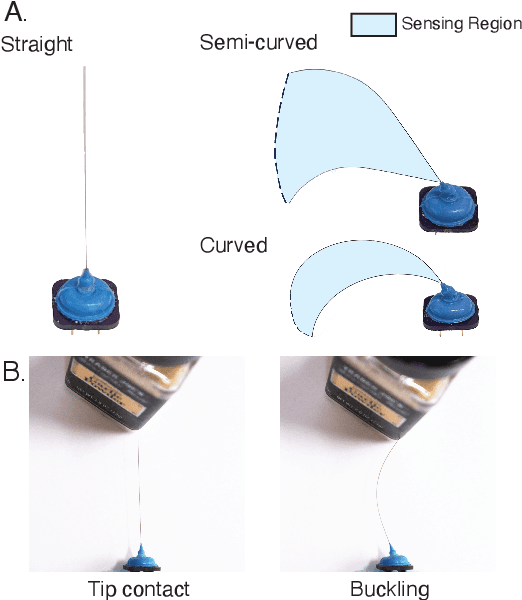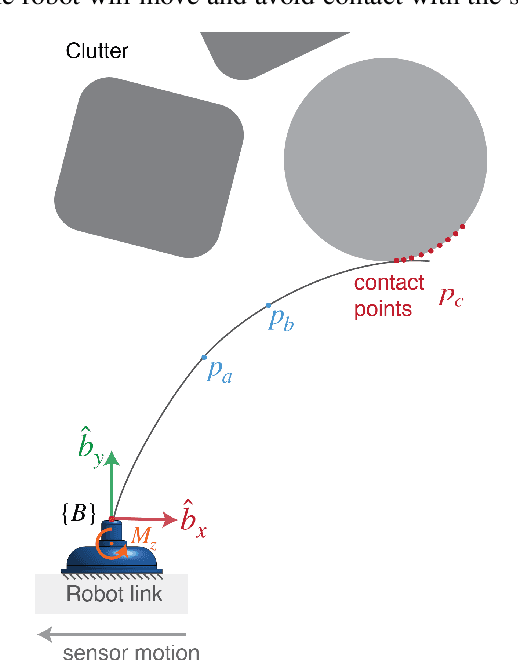Navigation and 3D Surface Reconstruction from Passive Whisker Sensing
Paper and Code
Jun 10, 2024



Whiskers provide a way to sense surfaces in the immediate environment without disturbing it. In this paper we present a method for using highly flexible, curved, passive whiskers mounted along a robot arm to gather sensory data as they brush past objects during normal robot motion. The information is useful both for guiding the robot in cluttered spaces and for reconstructing the exposed faces of objects. Surface reconstruction depends on accurate localization of contact points along each whisker. We present an algorithm based on Bayesian filtering that rapidly converges to within 1\,mm of the actual contact locations. The piecewise-continuous history of contact locations from each whisker allows for accurate reconstruction of curves on object surfaces. Employing multiple whiskers and traces, we are able to produce an occupancy map of proximal objects.
 Add to Chrome
Add to Chrome Add to Firefox
Add to Firefox Add to Edge
Add to Edge